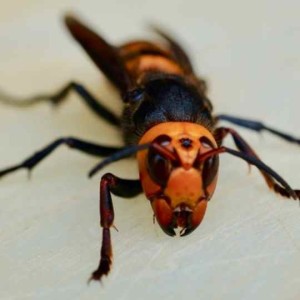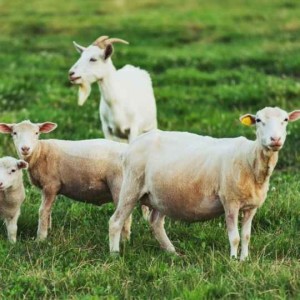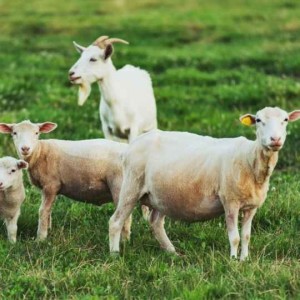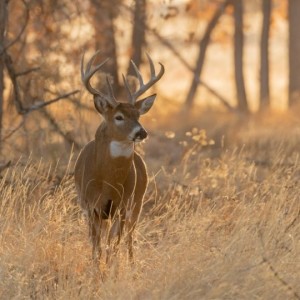CAHSS Podcast Series - Animal Health Insights
The Canadian Animal Health Surveillance System (CAHSS): A shared national vision leading to effective, responsive, integrated animal health surveillance in Canada. Le Système canadien de surveillance de la santé animale (SCSSA): Une vision nationale commune qui mènera à une surveillance efficace, souple et intégrée de la santé animale au Canada.
Episodes

Friday Mar 11, 2022
Friday Mar 11, 2022
In 2019, a “new bug on the block” showed up in British Columbia, and an extensive effort was launched to locate and eradicate an intimidating non-native hornet species. You’ve likely heard of these Asian Giant Hornets as they were all over the news – a big wasp – with strong stingers and the buzzy potential to harm native pollinator species and honeybees in Canada. Paul van Westendorp, the provincial apiculturalist or “honeybee expert” for the province of British Columbia, helped to identify this species of wasp upon its discovery. Along with colleagues, Paul worked to locate and eradicate a hornet nest near Nanaimo, B.C., and continues to monitor for this insect species in B.C.
Links of Interest:
B.C. Ministry of Agriculture Pest Alert: Asian Giant Hornet
Information on Paul van Westendorp and his work
Asian Giant Hornet information from Ontario.ca
Asian Giant Hornet information from Invasive Species Centre
Reporting Invasive Species Sightings by Province

Wednesday Feb 16, 2022
Wednesday Feb 16, 2022
As caretakers and advocates for the animal populations within the wilderness areas in Canada’s national park system, teams of wildlife experts work collaboratively to try to maintain this balance of health in their regions of care. In the past few years, in Alberta’s national parks, Parks Canada wildlife specialists were challenged to manage an outbreak of a disease within one of the park’s watershed systems. Whirling disease is a condition affecting fish and causing abnormal swimming patterns because of physical malformations. Dr. Mark Taylor, an aquatic biologist with Parks Canada in Banff National Park, works in all aspects of aquatic resource management, and worked with others in Alberta and Canada to manage this threat to the wild fish populations through the use of some novel strategies.
Links of Interest:
Environmental Impact Analysis: Whirling Disease Eradication from Johnson Lake, Banff National Park
Information re: the Tubifex worm theseis: Whelan, C. (2020). Distribution and habitat characteristics of Tubifex tubifex, intermediate host of whirling disease, in Banff National Park (Unpublished master's thesis). University of Calgary, Calgary, AB. http://hdl.handle.net/1880/112571
Overview of Whirling Disease Biology and Management: Sarker S, Kallert DM, Hedrick RP, El-Matbouli M. Whirling disease revisited: pathogenesis, parasite biology and disease intervention. Dis Aquat Organ. 2015 May 21;114(2):155-75. doi: 10.3354/dao02856. PMID: 25993890.
Whirling Disease confirmed in fish from Johnson Lake in Banff National Park, Parks Canada
Whirling Disease Fact Sheet, CFIA
First known publication re: eradication of Whirling Disease: Nehring RB, Alves J, Nehring JB, Felt B. Elimination of Myxobolus cerebralis in Placer Creek, a Native Cutthroat Trout Stream in Colorado. J Aquat Anim Health. 2018 Dec;30(4):264-279. doi: 10.1002/aah.10039. Epub 2018 Aug 21. PMID: 30133011.

Monday Jan 24, 2022
Monday Jan 24, 2022
When it comes to providing veterinary care for small ruminants like sheep and goats, one of the most frustrating challenges for production can be the management of parasitic infections. Individual farms vary widely in their amount of pasture, availability of other species for pasture rotations, and their general deworming and parasite management protocols. Often a veterinarian is called in to address only the most severe flock or herd parasitic issues, and it can be challenging to get a program in place to bring these animals back from a severe infestation.
As part of disease surveillance work in Quebec, a unique program was created to connect veterinarians and producers, and to establish a targeted parasite management plans for the province’s sheep flocks and goat herds. Dr. Anne Leboeuf, a veterinarian who previously led the Quebec RAIZO disease surveillance network for small ruminants, and Dre. Denise Bélanger, a professor emeritus at the St-Hyacinthe Vet Faculty, epidemiologist, and a sheep producer, share information about this PISAQ Parasite management campaign and how it has improved understanding of the risk factors for Quebec flocks and herds.
Links of Interest:
Gestion intégrée du parasitisme gastro-intestinal - CEPOQ
PISAQ Campagne nº 7 : Visite zoosanitaire dans les élevages ovins et caprins
Programme intégré de santé animale du Québec (PISAQ)
Fact sheets - Santé biodiversité, avortment, reproduction | CEPOQ (English Fact Sheets)

Monday Jan 24, 2022
Monday Jan 24, 2022
Lorsqu’il est question de soins vétérinaires aux petits ruminants comme les ovins et les caprins, la gestion des infections parasitaires représente l’un des plus gros défis de la production. La quantité de pâturages disponibles, la disponibilité de différentes espèces pour effectuer la rotation des pâturages et le protocole de gestion du parasitisme varient beaucoup d’une ferme à l’autre. Souvent, le vétérinaire est appelé à traiter des problèmes parasitaires devenus graves au sein d’un troupeau et il est alors difficile d’intervenir efficacement pour guérir les animaux.
Au Québec, il existe un programme destiné aux éleveurs de moutons et de chèvres de la province pour les aider à créer des liens avec les vétérinaires et à établir un plan ciblé pour la gestion du parasitisme. Ce programme provincial a été mis sur pied dans le cadre des travaux de surveillance des maladies animales. Dre Anne Leboeuf est médecin vétérinaire et elle était responsable du Réseau de surveillance des petits ruminants au sein du MAPAQ lorsque nous avons réalisé l’enregistrement du balado. Elle a accepté de nous partager de l’information au sujet de la campagne PISAQ qui a pour thème la gestion intégrée du parasitisme dans les élevages caprins et ovins et de nous expliquer comment cette campagne a permis de mieux comprendre les facteurs de risques à considérer dans les troupeaux québécois. Elle est accompagnée par Dre Denise Bélanger, professeure émérite à la Faculté de médecine vétérinaire de l’Université de Montréal. Dre Bélanger s’est impliquée dans cette initiative à titre d’épidémiologiste mais aussi en tant qu’éleveure de moutons.
Liens d’intérêt:
Gestion intégrée du parasitisme gastro-intestinal - CEPOQ
PISAQ Campagne nº 7 : Visite zoosanitaire dans les élevages ovins et caprins
Programme intégré de santé animale du Québec (PISAQ)
Fact sheets - Santé biodiversité, avortment, reproduction | CEPOQ (English Fact Sheets)

Wednesday Dec 29, 2021
Wednesday Dec 29, 2021
Mental health is an essential facet of health and well-being for everyone, but there are unique facets of mental health that can be affected for all those who work with animals and who navigate the challenges associated with an animal health incident. Dr. Margaret McGeoghegan and Dr. Luc Bergeron discuss the significant mental health impacts of these situations on producers and veterinarians, and review how our government organizations are consistently working to improve communications and supports in these incredibly stressful scenarios.
Dr. McGeoghegan currently works as a Canadian Food Inspection Agency veterinary program analyst and she is also a CFIA liaison for the vet college and the province of PEI. Additionally, she works closely with the provincial Chief Veterinary Officer, industry groups, and producers in PEI. As part of her work, she participates as a member of the CFIA National Human Destruction Emergency Response Team and working group. She participated in the 2004 Avian influenza outbreak in the Fraser Valley, B.C., that led to the development of national emergency response teams, and she trains and leads on many disease response exercises. She also was site commander in the Infectious Salmon Anemia outbreaks in Newfoundland in 2013 – so she has a strong understanding of the importance of strong leadership and clear communications to all those involved in an animal health incident.
Dr. Bergeron is a veterinarian and epidemiologist who graduated from the Faculty of Veterinary Medicine of the University of Montreal. He worked initially as a large animal veterinarian, and currently works in animal health surveillance, and is the coordinator of the surveillance network for bovine diseases at the Quebec Ministry of Agriculture, Fisheries and Food.
Links of Interest:
Mental health supports for producers and agricultural workers:
DoMoreAg: a not-for-profit organization focusing on mental health in agriculture across Canada.
Canadian Mental Health Association: Mental Health in the Agriculture Industry
B.C.: AgSafeBC Mental Health Resources
Yukon: Farm Stress resources
Alberta: Alberta Farm Mental Health Network
Saskatchewan: Saskatchewan Farm Stress rural support services
Manitoba: Manitoba Farm, Rural, and Northern support services
Ontario:
In the Know: A mental health literacy program for farmers and the agricultural community
Connex Ontario, mental health support services
Québec: Commision de la sante mentale du Canada: Cette ligne est accessible 24/7 partout au Québec.
Newfoundland and Labrador: Farmer-specific Mental Health Resources
Nova Scotia:
Producer Specific mental health resources from Nova Scotia
We Talk, We Grow: an initiative of Farm Safety Nova Scotia raising awareness and taking action to protect and nurture the mental health and well-being of Nova Scotia’s farming community
PEI:
farmerstalk.ca : confidential counselling for farmers
Farmer Assistance Program: counselling for farmers
New Brunswick: Mental health resources
News Release: Agriculture and Agri-food Canada: Governments Supporting Mental Health for Farming and Rural Communities
Chicken Farmers of Canada: Mental Health and Agriculture resources
Dairy Farmers of Canada: Mental Health resources
Canadian Cattlemen's Association Mental Health resources
Veterinary Mental Health:
Canadian Veterinary mental health resources from the CVMA
i-matter.ca: Mental health strategies for veterinarians and veterinary team members from OVMA

Friday Nov 26, 2021
Friday Nov 26, 2021
Some diseases have the potential to be so threatening to animal or human health, or so rapidly contagious, that veterinary authorities need to aware of a single case as soon as possible. For some of these reportable diseases, actions or interventions are required immediately, while for others, veterinary authorities need to be aware of their occurrence simply for disease surveillance and monitoring purposes. Veterinarians in practice, and even animal owners, are required to contact these authorities if they have even just the suspicion that an animal *might* have one of these reportable infections.
Once a veterinarian has contacted the appropriate authorities, these federal veterinarians (from the Canadian Food Inspection Agency) and sometimes provincial veterinarians, are involved in the processes of disease surveillance for certain specific diseases. In the rare case of a significant disease outbreak, these experts monitor the patterns of disease spread, and when indicated, may be involved in management of the case to ensure it does not turn into an incident affecting many animals, many humans, and our national food security systems and public health. This is an important role, and often involves several specialists working on the front lines, the middle lines, and behind the scenes, to ensure rapid diagnosis and appropriate management of an outbreak. Dr. Margaret McGeoghegan from the Canadian Food Inspection Agency, and Dr. Luc Bergeron, a disease surveillance veterinarian from Quebec, help to demystify these situations, and provide some clarification as to just who does what, and why and how they do it in the case of an animal health incident.
Links of Interest:
Terrestrial Animal Diseases list and information - CFIA
CAHSS Tools - Reportable and Notifiable Regulated Disease Tables
RAIZO - MAPAQ
OMAFRA - Livestock Disease Control and Prevention
Manitoba Animal Health, Disease Control and Surveillance
Disease Surveillance and Management - Saskatchewan
Provincially Regulated Animal Diseases - Alberta
Animal Disease - Foreign Animal Disease - British Columbia
Yukon Animal Health Unit
Newfoundland Animal Disease Surveillance
Nova Scotia Notifiable Animal Diseases
Canadian Wildlife Health Cooperative - wildlife disease surveillance

Friday Nov 05, 2021
Friday Nov 05, 2021
There are a number of clinical signs that always strike a bit of fear into the veterinary heart – for example, livestock that show blisters on their nose, mouth, or near their hooves, the dog or cat with unexplained neurological signs (especially if they had recent interaction with a bat), or the acute death of a number of animals. In any of these cases (and in many others) a veterinarian must keep the potential of certain reportable diseases on their differential list, and they contact their federal and provincial authorities to advise of this possibility. But, once a vet has made that contact, what happens? What’s the next step? This can sometimes be unclear, as each disease incident has many different variables, and generally, a “risk-based assessment” is performed to assess the level of concern and risk to other humans and animals on a case by case basis. The varied responses and the methods by which veterinary regulatory authorities manage a disease outbreak can be confusing, so in the next 3 podcast episodes we try to provide some clarity around these processes, by working through all levels of diagnosis and response – and highlight the connections between veterinarians and the provincial and federal veterinary authorities.
Dr. Ryan Tenbergen is a swine veterinarian who works with Demeter Services Vétérinaires, and he has a strong interest in research and epidemiology. He is a past-president of the Ontario Association of Swine Veterinarians, and contributes to disease surveillance nationally as a representative for the Maritimes on the Canadian Swine Health Information Network. Dr. Tenbergen shares his experiences interacting with veterinary authorities as part of the diagnostic process.
Links of Interest:
Find a CFIA District Office contact number

Friday Oct 08, 2021
Friday Oct 08, 2021
When diseases affect our wildlife, they can also impact the health of domestic animals and humans. Diseases may "spillover" from wildlife to other species, can be maintained in nature, develop new and more potent strains, and can travel across provincial, territorial, and national borders, often unimpeded. Increasing stresses due to habitat loss, international trade of animals and their parts, climate change, or any of the artificial constructs our human society creates – compound the health challenges faced by the wildlife species we share this planet with. Veterinarians and wildlife biologists work together to study, monitor, learn from, and support our wildlife populations.
Dr. Iga Stasiak is a veterinarian working as a wildlife health specialist in for the Ministry of the Environment in Saskatchewan. She works on a number of initiatives in that province, and is particularly active working on management of Chronic Wasting Disease, a disease of cervids. She discusses Chronic Wasting Disease and its surveillance with us, and discusses why wildlife health and disease monitoring is such an important (but complex) undertaking.
Links of Interest:
Canadian Resources:
Chronic Wasting Disease testing and surveillance information for Saskatchewan
CWD Surveillance and Mapping information from Canadian Wildlife Health Cooperative
Chronic Wasting Disease Alliance
CWD and Traditional Foods, Information from the Government of Canada
CWD testing and surveillance updates and information for Alberta
CWD testing and surveillance information for British Columbia
CWD surveillance program for Yukon
CWD Factsheet for NWT
Field Guide to Wildlife Diseases, NWT
CWD biological sample submission information, Manitoba
CWD prevention in Manitoba (2019) from a presentation to the Ontario Federation of Anglers and Hunters
CWD testing and surveillance information for Ontario
CWD surveillance information for Quebec
U.S. Resources:
The Center for Infectious Disease Research and Policy CWD website
USGS CWD Resource website



